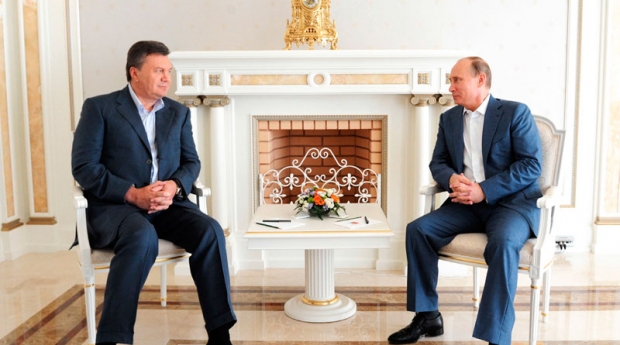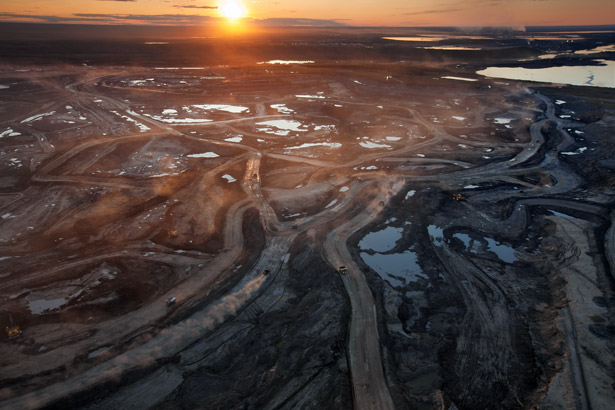For most people, if the word ‘economics’ does not conjure an old college nightmare of bespectacled professors scribbling madly on chalkboards, it might evoke the image of some anxious day trader on the stock exchange floor, sanity waning. On its surface, the world today is that of finance capitalism, of mortgages and interest rates and dividends and bond yields and price-to-earnings ratios as reported by Business News Network and Bloomberg. It is easy to understand why many people tune out, never learning more than the intuitive basics.
That is the world of business, however, which has become conflated with economics. The two are closely intertwined because our economy is staked on the principle of private property, and depends on the flow of capital between producers, consumers, and intermediaries. Still, the immense complexity of the business world, and the cult of endless profit-seeking, have in many ways derailed economic thinking away from the fundamental realities underlying the whole game. Economics need neither be abstruse nor sordid. In fact, if humanity proves successful in meeting its most pressing challenges, it will be because we were able to see the entire forest instead of remaining lost amongst the trees.
In a certain sense an economy is a living entity, composed of many smaller living parts interacting with and depending on one another, just as your body is made of cells. Living things require energy to sustain themselves and grow, and an economy is no different. Energy is the central pillar of economics, meaning that economies are constrained by the laws of thermodynamics, which govern energy in our universe. This is where thermoeconomics comes in, reconceptualizing economics in a way that accounts for inescapable physical laws.
The first law is that of Conservation of Energy, which states that energy cannot be created or destroyed, only transformed and transferred. The second law tells us that entropy, which is a measure of disorder, always increases; most of the energy exerted in any process is unavailable for work because it is wasted as heat. The third law is not applicable to our discussion here. In the spirit of avoiding esotericism, think of the three laws in terms of Ginsberg’s Theorem, as a game in which
- You can’t win
- You can’t break even
- You can’t quit
If that sounds like a frustrating game to play, you now understand what economics is all about. There really are no free lunches (just wry physics jokes).
Whereas today’s mainstream dogma takes perpetual economic expansion as a given, the law of entropy rules out eternal growth. Economic activity exploits our environment to meet our needs, using energy to make greater local order of the resources at our disposal. For example, we cut down trees and mine minerals, then we assemble those materials in ordered ways that are more useful to us. Since the universe always tends toward disorder, though, this means that any order we create locally through our actions must be offset by even greater disorder in some other way. Entropy forbids free wealth: any benefit we gain from modifying the environment for our survival inevitably produces some sort of debt.
Ecological debt is generated by unsustainable consumption, and it comes in many forms. The most obvious are pollution and climate change. By harvesting forests and exploiting fossil fuels to power our societies we have disrupted Earth’s carbon cycle, altering oceanic and atmospheric chemistry and affecting our planet’s energy balance in ways that cause upheaval to lifeforms. Earth Overshoot Day, which in 2017 occurred on August 2, marks the moment each year when humanity’s footprint surpasses the planet’s annual capacity for renewal, producing debt that adds to the ecological deficit. Human industry has had such a profound impact on the planet, in fact, that we have brought about an entirely new geological epoch, known as the Anthropocene.
Natural disasters are another reminder of our debt to the biosphere. We have no option but to defend human settlements from forest fires, for instance. Yet, over time, depriving forests and grasslands from the natural burns they would otherwise incur makes them increasingly aged and dry. Sooner or later that accumulated debt comes due, resulting in colossal fires that are difficult to contain. In the same way, eradicating disease is an ethically necessary goal, but overuse of antibiotics will eventually give rise to drug-resistant ‘superbugs’ that could foist an existential test upon humanity. We can run from the forces of nature, but we cannot hide.
Thermoeconomics also provides a more realistic perspective from which to view conventional economic questions. Finance capitalism operates on the basis of money that is lent and spent, otherwise known as credit. The practice of fractional reserve banking uses credit to produce the money multiplier effect, which enables an economy to be much larger than the tangible assets underwriting it.
Just as the laws of physics dictate, most of the ‘wealth’ created from this magnification effect is not actually grounded in reality, but in business confidence and speculation. That is why, when the stock market crashes, nobody gets the money that is lost. It literally vanishes into thin air. Money serves three basic functions: as a unit of account, a medium of exchange, and a store of value. The money used to purchase publicly-traded shares becomes a store of value, and the market-value of a share mainly reflects investors’ confidence in the company issuing it. When confidence in a company fades, the value of its shares drops, erasing the money that value represented.
In the same way that the first law of thermodynamics conserves energy, so too is wealth conserved. Creating credit is not the same as creating wealth. Ray Dalio explains that money borrowed to boost spending today must eventually be paid back. Repaying the interest on that debt comes at the expense of future spending, causing the short term business cycle of economic expansions and recessions. Although automation is divorcing the relationship between human labour and production, one implication of Say’s Law is that wages should rise as productivity improves. The problem is that compound debt interest accumulates faster than productivity and wages grow, meaning the economy’s debt-to-income and debt-to-GDP ratios become heavier over time. That is where the long term debt cycle comes from, along with painful economic crises during periods of deleveraging.
The strength of finance capitalism is its ability to distribute capital widely so that more people can participate in the economic game, raising living standards because many hands make light work. Still, the fact remains that productivity gains are the only source of genuine economic growth. Our current economic system simply borrows from the future in perpetuity, all the while lurching from crisis to crisis on a fairly predictable schedule. Humanity exists in a finite space with ever-tightening constraints and, unfortunately, no amount of financial chicanery will ever succeed in cheating the unbreakable laws of our universe.
No matter the situation, what goes up must come down. Real wealth comes only from real things and energy, which are beholden to physical laws. One would never realize from the way that Donald Trump boasts about record stock market levels that the world’s mature economies actually look to be condemned to long term stagnation. The President’s bullish outlook betrays his feeble grasp of economics, and belies the fact that the American economy’s latent fundamentals portend decline. Thermoeconomics should serve as a lesson in realism for those who share in his ignorance and sanguinity. For the rest of us, it provides a refreshing and comprehensive – if solemn – perspective that better positions us to be stewards of the world going forward. Perhaps an economic paradigm that is actually grounded in reality could even escape dismality.
Photo credit: “Huntington Beach Trip – Sunset over the oil rig” (August 28, 2014). Pete Markham via Flickr. Licensed under CC 2.0 Generic.
https://www.flickr.com/photos/pmarkham/15239838875
Disclaimer: Any views or opinions expressed in articles are solely those of the authors
and do not necessarily represent the views of the NATO Association of Canada.




